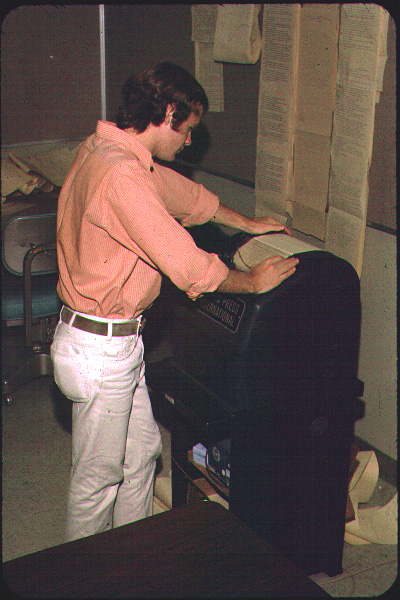 |
Like most newspapers, the Daily Titan had a wire service that
delivered state, national and world news over a teletype machine hooked
to a phone line that processed data at 110 or 300 baud (even today's SLOW
home modems receive
data at 56,000 baud--56 kilobaud). Jim Benson looks over the day's
wire news to determine if anything on the wire is important enough
to CSUF students to displace local campus news in the
day's news budget. |
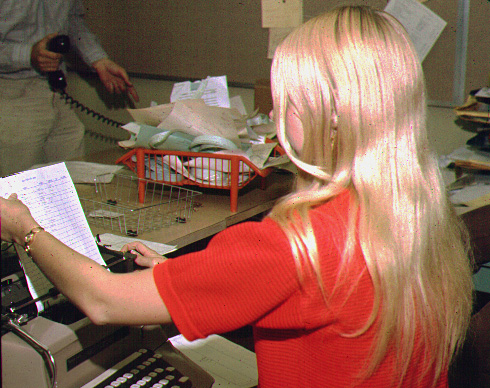
As a first step in producing the Daily Titan, an editor (Gail Rhea) makes
up an assignment sheet, using a device known as a manual typewriter.
A marvel of mechanical engineering, this gadget was a true EPA Energy
Star: it used no electricity whatever. A skilled journalist
could write a story at a rate of perhaps 60 words per minute.
But none of the original keystrokes could be preserved: someone would
have to retype the story again to set it in type, inevitably introducing
new typographic errors in the process. By the early 1970s
publishers everywhere were beginning to buy video display terminals
linked to typesetting computers so writers' keystrokes could be preserved
and copy editing could be done electronically, saving an enormous amount of labor.
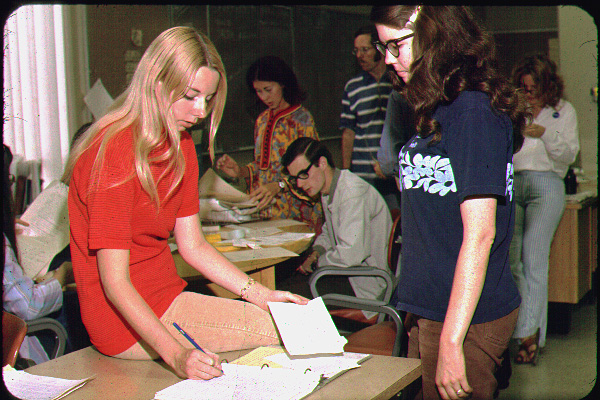 The editor gives an assignment to a reporter (Susan Truberg), specifying the
scope and length of the story.
The editor gives an assignment to a reporter (Susan Truberg), specifying the
scope and length of the story.
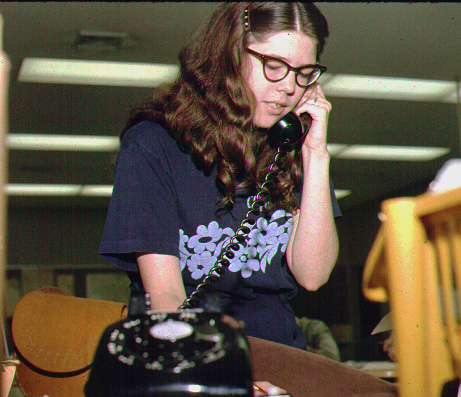
The reporter then makes arrangements for interviews or actually conducts
interviews using a rotary dial telephone. In those days even the phones were
owned by a huge cartel: a network run by AT&T
and its local subsidiary, Pacific Bell. AT&T owned
about 90 percent of all local telephone systems in addition to its long-distance
monopoly until an antitrust ruling in the 1980s changed everything in the
phone business. Yes, the dial phone itself was owned by AT&T. It wasn't
even legal to buy your own phone and plug it in. In fact, there
were no plugs; the phones were hardwired into the network.
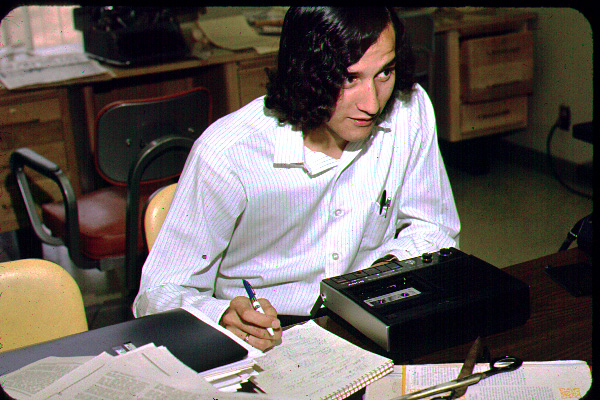 Sometimes a reporter used an ultra-compact portable tape recorder to
tape an interview and then checked the tape to assure accurate quotes.
Here Ray Estrada double-checks his notes.
Sometimes a reporter used an ultra-compact portable tape recorder to
tape an interview and then checked the tape to assure accurate quotes.
Here Ray Estrada double-checks his notes.
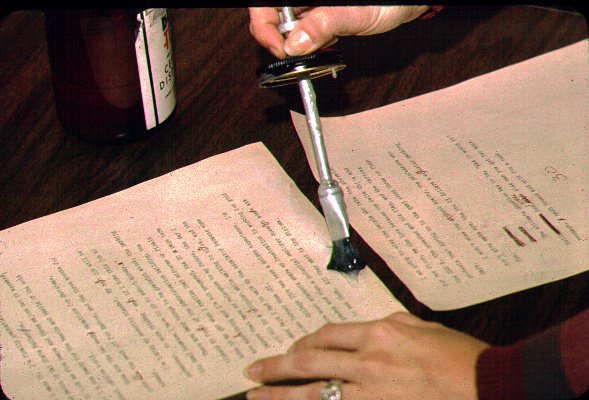
Once the story is typed, the reporter uses rubber cement to glue the
pages together...

...and the reporter, in this case Jeannette Montgomery, edits her
story with a pencil.
 |
Once the reporter turns in the story, the assigning editor looks it
over to be sure it covers all of the desired angles and is of a suitable
length.
A page editor then adds the story to a dummy of the page, estimating
its length according to a traditional and usually reliable formula! |

Next, the "slotman," Lynn O'Dell, working at a traditional U-shaped copy
desk, either assigns a copy reader to go over the story or does it herself.
A good copy desk was/is a crucial part of the editorial quality control
process.
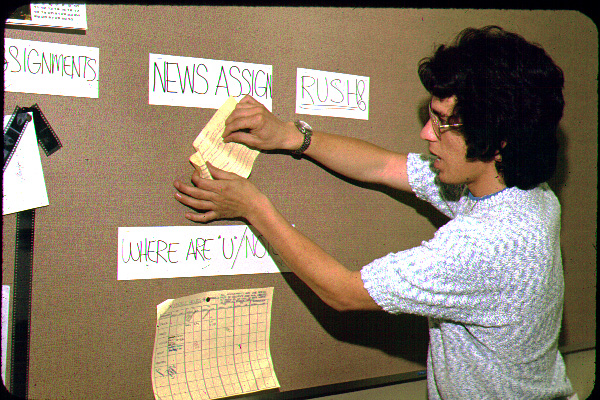
Meanwhile, photo editor Michael Salas picks up his assignments...
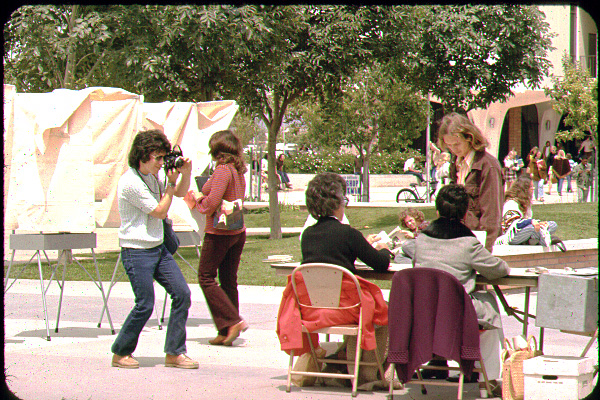
...and goes out to shoot pictures with a Nikon SLR (the standard,
but lacking a zoom lens)
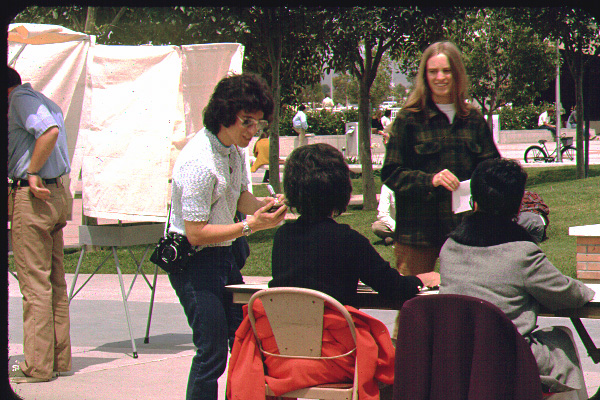
The photographer gets names and other information from everyone visible
in his photos, of course.
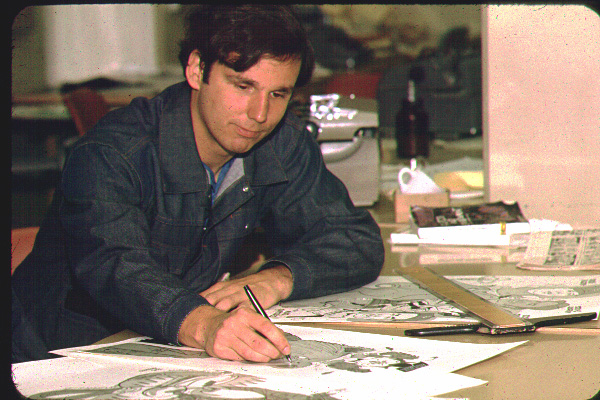
Back in the office, cartoonist Tom Haygood completes his work.
Next: the Daily Titan production facility
in H-223 turns out camera-ready pages.
OR
Return to Daily Titan history opening page
|